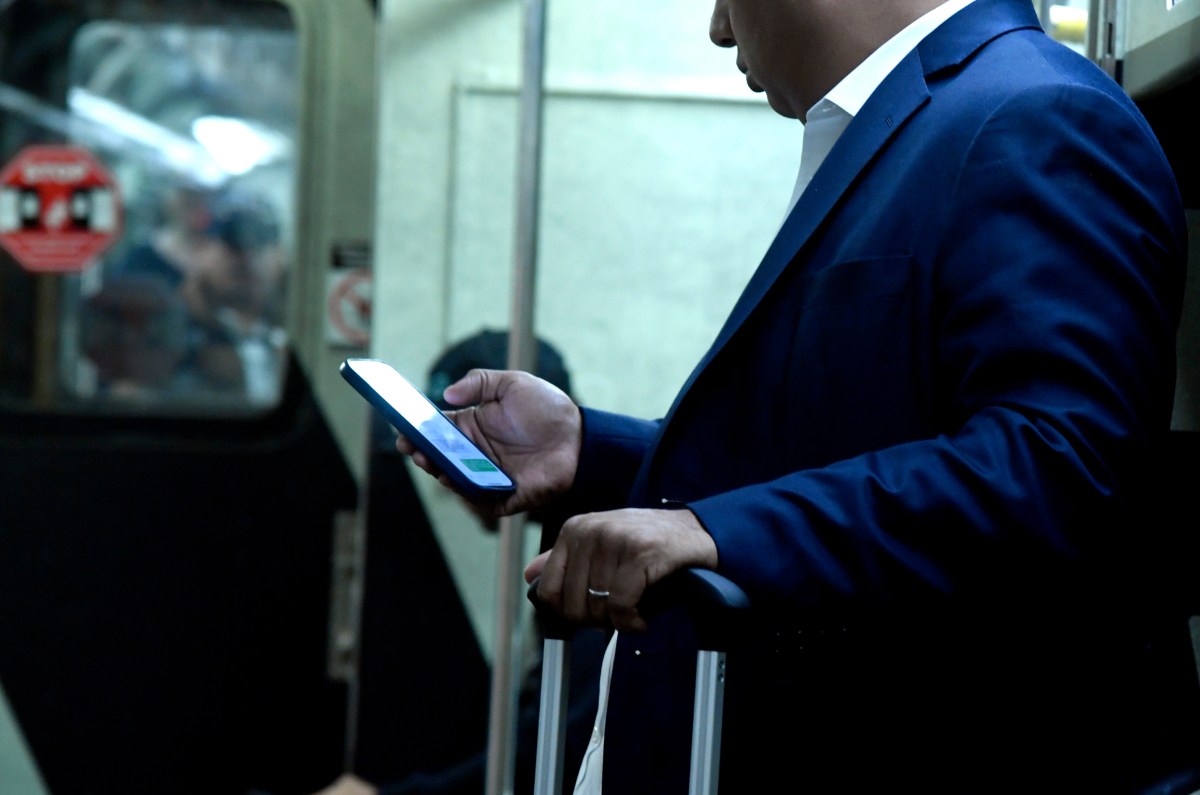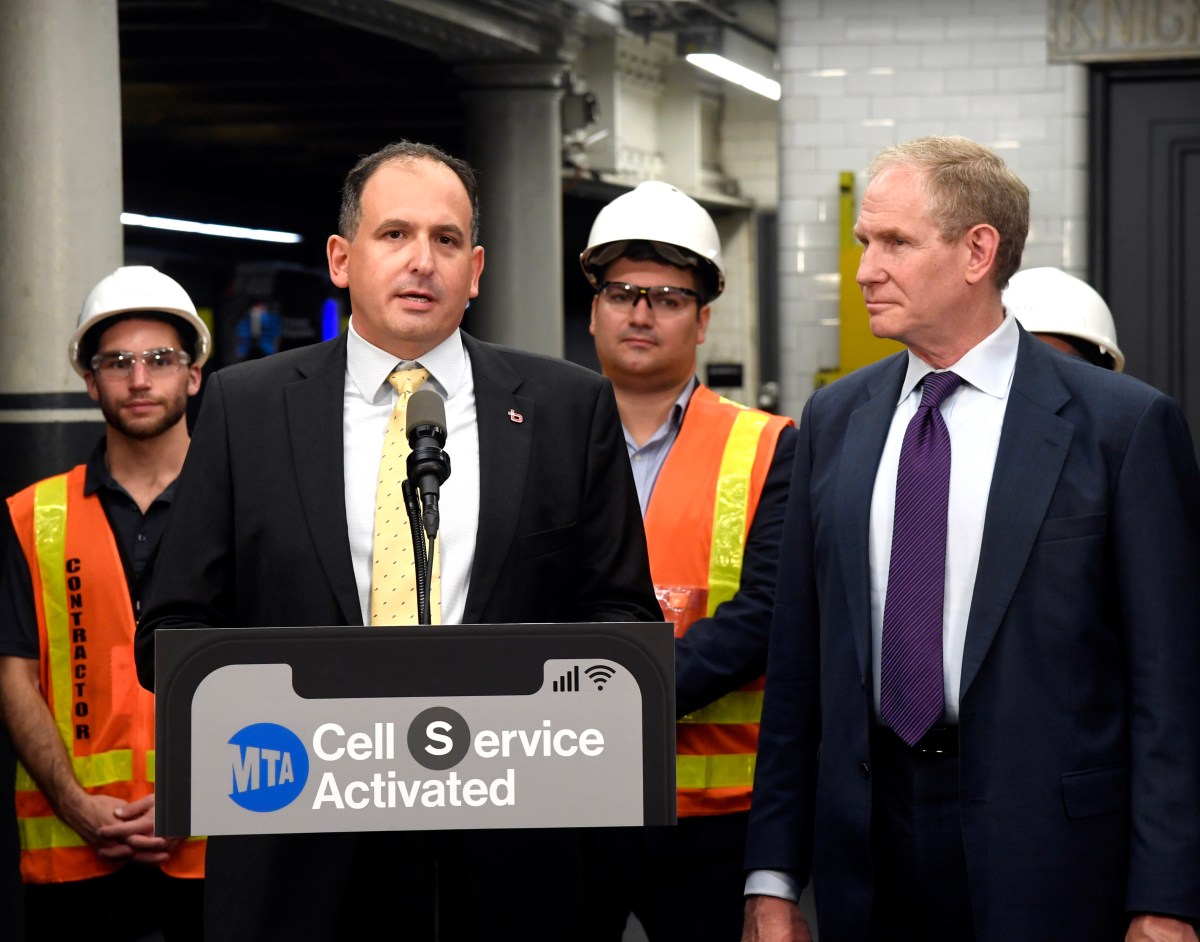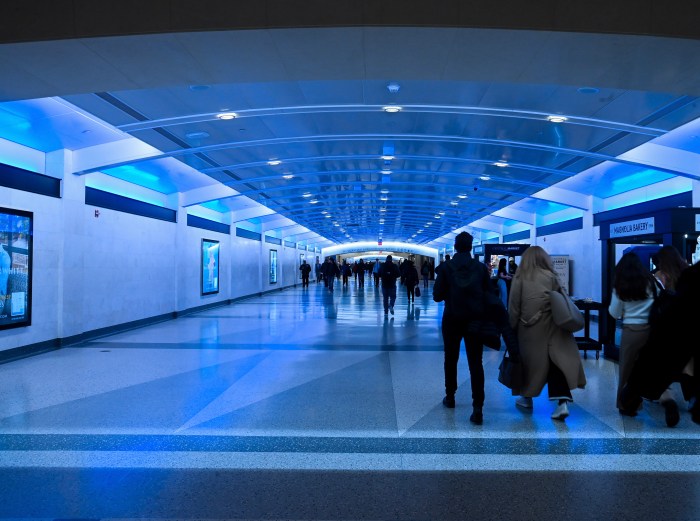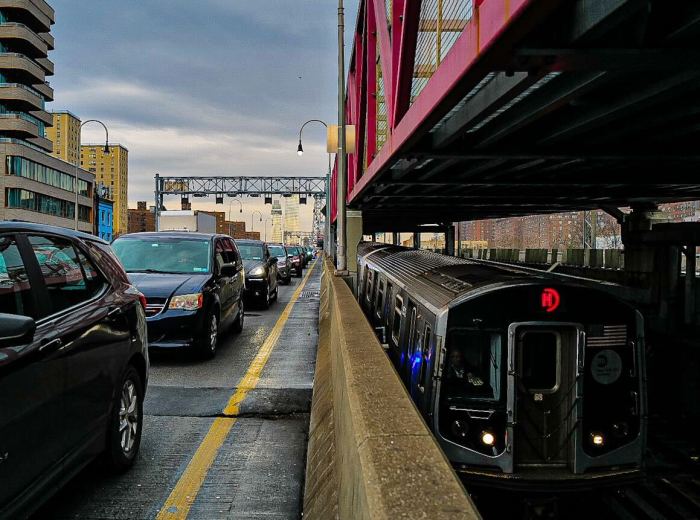The 42nd Street Shuttle is now the first subway line fully connected to wireless cell service, including in the tunnels between stations, the MTA announced on Wednesday.
The tunnel between Grand Central and Times Square along 42nd Street, used by the shuttle, is the first segment of the system where riders can now send text messages or emails, or surf the web for the duration of their trip.
But that’s just the beginning: the MTA says it plans to connect all 418 miles of underground subway tracks with 5G cell service, plus all 191 above-ground stations and 21 Staten Island Railway stops with WiFi years after wireless connectivity came to underground stations.
“This is a major step forward in modernizing our transit system; whether it’s checking email or answering a phone call, people want to be able to do work on the mass transit system. It’s one of the advantages of not driving after all,” said Janno Lieber, the chair and CEO of the MTA, at the Times Square stop on Sept. 4. “And we also have to recognize there’s a lot of people who want to play Candy Crush or continue their domestic arguments, and we have to accommodate them as well.”
Riders shouldn’t expect full connectivity in the system for many more years, but transit honchos say they have several projects in the immediate pipeline.

The MTA’s partner, Boldyn Networks (formerly known as Transit Wireless), will be in the Joralemon Tunnel carrying the 4 and 5 trains under the East River and are expected to complete installation by next year.
Next year, work will begin to connect five miles of the Lexington Avenue Line carrying the 4, 5, and 6 trains between Grand Central Terminal and 161st Street-Yankee Stadium in the Bronx, the most heavily used mass transit route in the United States.
Lieber said Wednesday that every time service is suspended on a line for planned capital work, the MTA will contract Boldyn to install cables and other infrastructure to outfit the tunnel with 5G; workers installed 100 miles of cables in the G train tunnels this summer as the line shut down for signal modernization, though connectivity is not available just yet.
The $600 million megaproject is being paid for entirely by Boldyn, and taxpayer money will not fund a dime of the work, said Jamie Torres-Springer, the head of MTA Construction & Development. Boldyn seeks to make a return on its investment by leasing out its cables to wireless providers like AT&T, T-Mobile, and Verizon, plus through monetizing user data and licensing fees, The New York Times reported in 2022.
Working on 42nd Street was easier than most parts of the subway system because the shuttle closes down at night and the MTA recently undertook a major renovation project that expanded the platforms on the S train.
“The rest of the system is more complex because we’re 24/7,” said Torres-Springer. “And we’ve gotta get there for sustained periods of time to get the infrastructure in.”

Still, once the project is done, some believe cell connectivity will be critical in restoring New Yorkers’ faith in their transit system and the city at large.
“When these things work seamlessly, it makes everyone feel better about New York,” said Julie Samuels, the head of tech trade association Tech NYC. “When the subway is working, and when you can be online underground, when you can swipe in easily on your phone, when these things just work, that’s when people believe in New York.”
Still, officials warn that New Yorkers shouldn’t use connected tunnels as an excuse to annoy other New Yorkers, instead hoping they mind the message of its “Courtesy Counts” ad campaign.
“Don’t be the guy who’s showing a loud and maybe inappropriate movie on your phone next to a kid,” said Lieber. “Don’t be the guy who’s blasting your work, your music, to people who might want to do their reading or work. Be respectful. This is a shared public space. New York is all about shared public space, and that’s basic respect.”
Read More: https://www.amny.com/nyc-transit/


































